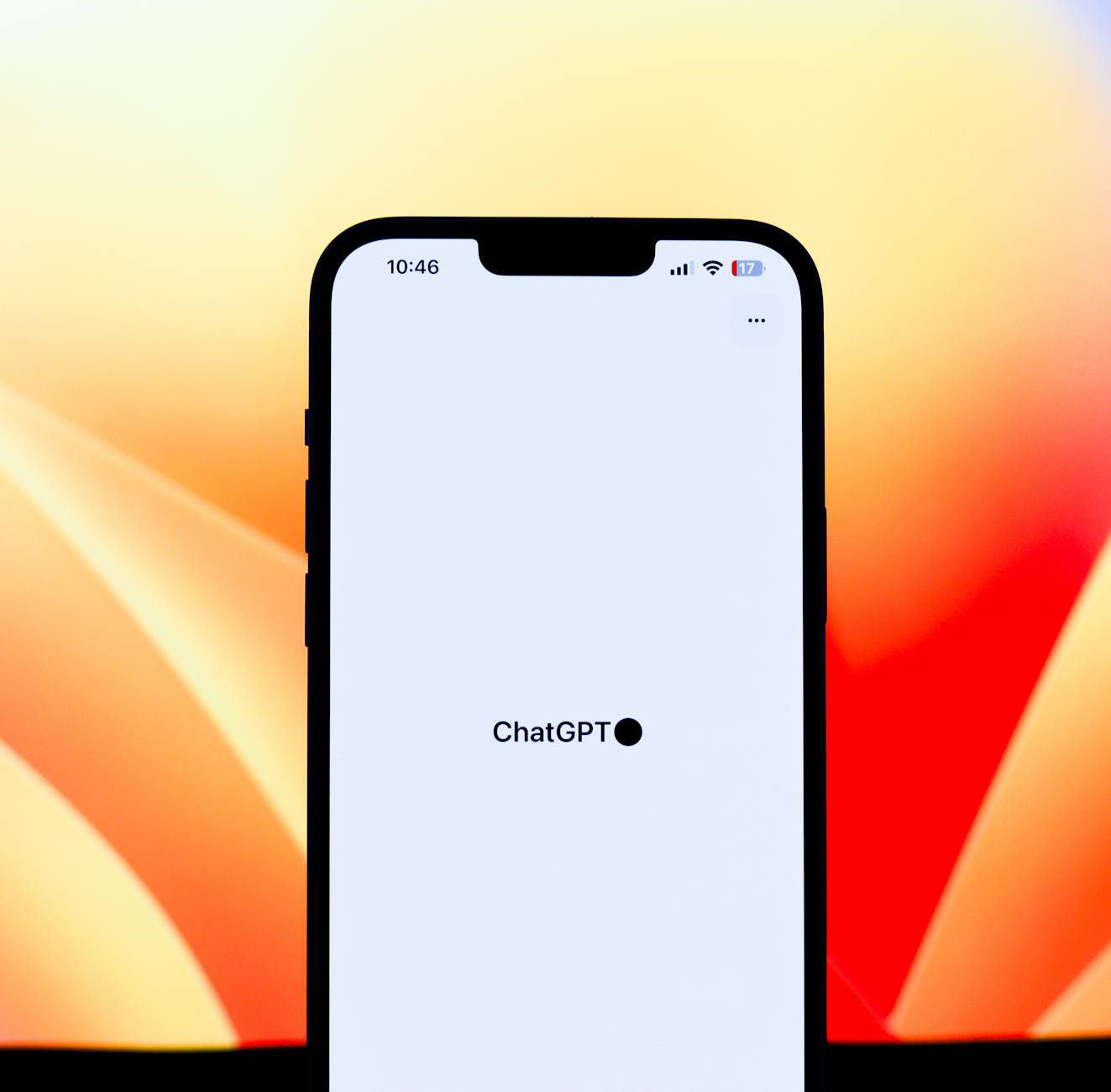Understanding How ChatGPT Processes Input: A Step-by-Step Guide Introduction ChatGPT is a language model based on the Transformer architecture. It generates responses by processing input text through several neural network layers. By understanding each step, we can appreciate how ChatGPT generates coherent and contextually appropriate replies. Additionally, ChatGPT follows a decoder-only approach (as in the GPT family of models). This means it uses a single stack of Transformer layers to handle both the input context and the generation of output tokens, rather than having separate encoder and decoder components. Step 1: Input Tokenization What Happens? The input text is broken down into smaller units called tokens. ChatGPT uses a tokenizer based on Byte Pair Encoding (BPE). Neural Network Involvement: No — Tokenization is a preprocessing step, not part of the neural network. Example: Input Text: “Hi” Tokenization Process: TextToken ID“Hi”2 Figure 1: Tokenization Input Text: “Hi”↓Tokenization↓Token IDs: [2] Step 2: Token Embedding What Happens? Each token ID is mapped to a token embedding vector using an embedding matrix. The embedding represents the semantic meaning of the token. Neural Network Involvement: Yes — This is part of the neural network as the Embedding Layer.Here, the embedding matrix \(\mathbf{E}\) is learned during training, which means during the backpropagation process, the embedding matrix is updated based on the gradients calculated for errors in predictions. Every time the model processes a token, the embedding matrix adjusts its values to better represent the relationships between tokens and their contexts. Mathematical Representation: The embedding matrix \(\mathbf{E}\) has a size of \(V \times d_{\text{model}}\), where \(V\) is the vocabulary size and \(d_{\text{model}}\) is the model’s hidden dimension (e.g., 768). For Token ID 2: \(\mathbf{x}_1 = \mathbf{E}[2]\) Example: Assuming \(\displaystyle d_{\text{model}} = 4\): Embedding Vector: [0.1, 0.2, 0.3, 0.4] Token IDEmbedding Vector \(\mathbf{x}_1\)2[0.1, 0.2, 0.3, 0.4] Step 3: Positional Encoding What Happens? Positional encodings are added to embeddings to give the model information about the position of tokens in the sequence. This is done using sine and cosine functions. Neural Network Involvement: No — Positional encoding is a mathematical function applied to embeddings and is not learned. However, it is crucial because without this, the Transformer model would have no understanding of the order of the tokens. Mathematical Representation: For position \(p = 1\), for each dimension \(i\): \[\mathbf{p}_1[2i] = \sin\!\Bigl(\frac{p}{10000^{2i/d_{\text{model}}}}\Bigr)\quad\mathbf{p}_1[2i+1] = \cos\!\Bigl(\frac{p}{10000^{2i/d_{\text{model}}}}\Bigr)\] Positional Encoding Vector: [0.8415, 0.5403, 0.00999983, 0.99995] Adding Positional Encoding: \(\mathbf{z}_1 = \mathbf{x}_1 + \mathbf{p}_1 = [0.9415, 0.7403, 0.30999983, 1.39995]\) Dimension\(\mathbf{x}_1\)\(\mathbf{p}_1\)\(\mathbf{z}_1 = \mathbf{x}_1 + \mathbf{p}_1\)00.10.84150.941510.20.54030.740320.30.009999830.3099998330.40.999951.39995 Step 4: Input to the Transformer What Happens? The positionally encoded embeddings are passed as input to the Transformer model. Neural Network Involvement: Yes — The Transformer model is a neural network with multiple layers. This step feeds the embeddings into the first layer of the Transformer architecture. Input Vector: \(\mathbf{Z} = [\mathbf{z}_1]\) Figure 2: Input to Transformer Positionally Encoded Embedding (\(\mathbf{z}_1\))↓Input to Transformer Step 5: Multi-Head Self-Attention Mechanism What Happens? The Transformer applies the self-attention mechanism to the input embeddings. Self-attention allows the model to weigh the importance of different tokens relative to each other. This is a crucial part of the neural network, responsible for learning relationships between tokens. Neural Network Involvement: Yes — Self-attention is a neural network mechanism where the model learns weights (importance) for each token relative to others. The learned weights \(\mathbf{W_Q}\), \(\mathbf{W_K}\), and \(\mathbf{W_V}\) are updated during backpropagation. Each token is transformed into three different representations: queries (\(\mathbf{Q}\)), keys (\(\mathbf{K}\)), and values (\(\mathbf{V}\)), and these representations are then used to compute attention scores. Components: Weights: \(\mathbf{W_Q}\) (query), \(\mathbf{W_K}\) (key), \(\mathbf{W_V}\) (value), each of size \(d_{\text{model}} \times d_k\). Mathematical Operations: Compute Queries, Keys, and Values:\(\mathbf{q}_1 = \mathbf{z}_1 \mathbf{W_Q},\quad \mathbf{k}_1 = \mathbf{z}_1 \mathbf{W_K},\quad \mathbf{v}_1 = \mathbf{z}_1 \mathbf{W_V}\) Compute Attention Scores:\(\text{score}_{1,1} = \frac{\mathbf{q}_1 \cdot \mathbf{k}_1^\top}{\sqrt{d_k}}\) Compute Attention Weights:\(\alpha_{1,1} = \text{softmax}(\text{score}_{1,1}) = 1\)(since there’s only one token in this example). Compute Attention Output:\(\mathbf{h}_1 = \alpha_{1,1}\,\mathbf{v}_1 = \mathbf{v}_1\) Example Simplification: Assume \(\mathbf{W_Q} = \mathbf{W_K} = \mathbf{W_V} = \mathbf{I}\) (identity matrix). \(\mathbf{q}_1 = \mathbf{k}_1 = \mathbf{v}_1 = \mathbf{z}_1\) Attention Score:\(\text{score}_{1,1} = \frac{3.4904}{2} = 1.7452\) ComponentValue\(\mathbf{q}_1\)[0.9415, 0.7403, 0.30999983, 1.39995]\(\mathbf{k}_1\)Same as \(\mathbf{q}_1\)\(\mathbf{v}_1\)Same as \(\mathbf{q}_1\)Score \(\text{score}_{1,1}\)1.7452Attention Weight\(\alpha_{1,1} = 1\)Output \(\mathbf{h}_1\)Same as \(\mathbf{v}_1\) Step 6: Add & Normalize What Happens? A residual connection adds the original input to the output of the self-attention layer. Layer normalization is then applied to stabilize training. This step ensures that the output remains within a manageable range for future layers. Neural Network Involvement: Yes — This is part of the neural network. The residual connection ensures that gradients flow through the network effectively, preventing the vanishing gradient problem. Layer normalization includes learnable parameters \(\gamma\) and \(\beta\), which are updated during training. Mathematical Representation: Residual Connection:\(\mathbf{s}_1 = \mathbf{z}_1 + \mathbf{h}_1 = 2\,\mathbf{z}_1\) Layer Normalization:\(\mathbf{n}_1 = \text{LayerNorm}(\mathbf{s}_1)\) Example Simplification: \(\mathbf{s}_1 = 2 \times [0.9415, 0.7403, 0.30999983, 1.39995] = [1.8830, 1.4806, 0.61999966, 2.7999]\) ComponentValue\(\mathbf{s}_1\)[1.8830, 1.4806, 0.61999966, 2.7999]Mean \(\mu\)1.6959Standard Deviation \(\sigma\)0.772\(\mathbf{n}_1\)[0.242, -0.279, -1.396, 1.433] Step 7: Position-wise Feedforward Network What Happens? The feedforward network applies a two-layer neural network to each position independently. The main purpose of this is to allow non-linearity and enable more complex transformations of the data. Neural Network Involvement: Yes — This is part of the neural network. The two linear layers (with learnable weights \(\mathbf{W_1}\), \(\mathbf{W_2}\)) and a non-linear activation function (like ReLU) are key components of a neural network. The weights are updated through backpropagation during training. Mathematical Representation: First Linear Transformation and ReLU Activation:\(\mathbf{f}_1 = \text{ReLU}(\mathbf{n}_1 \mathbf{W_1} + \mathbf{b}_1)\) Second Linear Transformation:\(\mathbf{f}_1 = \mathbf{f}_1 \mathbf{W_2} + \mathbf{b}_2\) Residual Connection and Layer Normalization:\(\mathbf{y}_1 = \mathbf{n}_1 + \mathbf{f}_1\)\(\mathbf{o}_1 = \text{LayerNorm}(\mathbf{y}_1)\) Example Simplification: Assume \(\mathbf{W_1}\) and \(\mathbf{W_2}\) are identity matrices, and \(\mathbf{b}_1 = \mathbf{b}_2 = 0\). \(\mathbf{f}_1 = \text{ReLU}(\mathbf{n}_1) = [0.242, 0, 0, 1.433]\) Compute \(\mathbf{y}_1\): \(\mathbf{y}_1 = \mathbf{n}_1 + \mathbf{f}_1 = [0.484, -0.279, -1.396, 2.866]\) Figure 3: Position-wise Feedforward Network Input: \(\mathbf{n}_1\)↓First Linear Transformation + ReLU↓Second Linear Transformation↓Add Residual Connection (\(\mathbf{n}_1 + \mathbf{f}_1\))↓Layer Normalization↓Output: \(\mathbf{o}_1\) Step 8: Stacking Multiple Transformer Layers What Happens? The output \(\mathbf{o}_1\) is passed through multiple Transformer layers. This step repeats the self-attention mechanism and feedforward network multiple times (e.g., 12 layers in GPT models). Each layer has its own learnable parameters and allows the model to capture more abstract relationships in the data. Neural Network Involvement: Yes — Each Transformer layer is a neural network with its own set of weights. The process of stacking layers allows the model to build hierarchical representations of the input. The weights in each layer are updated independently during training. Figure 4: Stacking Multiple Transformer Layers Input: \(\mathbf{o}_1^{(0)} = \mathbf{o}_1\)↓Layer 1: \(\mathbf{o}_1^{(1)}\)↓Layer 2: \(\mathbf{o}_1^{(2)}\)↓…↓Layer N: \(\mathbf{o}_1^{(N)}\) Step 9: Generating Output Probabilities What Happens? The final output is projected to the vocabulary space to get logits. Logits are converted to probabilities using the softmax function. This step helps the model predict the most likely next token. Neural Network Involvement: Yes — The output layer is a neural network layer that transforms the hidden representation \(\mathbf{o}_1^{(N)}\) into logits. The projection matrix \(\mathbf{W_O}\) and the bias \(\mathbf{b}_O\) are learned during training and are updated via backpropagation. Mathematical Representation: Compute Logits:\(\mathbf{l} = \mathbf{o}_1^{(N)} \mathbf{W_O} + \mathbf{b}_O\) Compute Probabilities:\(\mathbf{p} = \text{softmax}(\mathbf{l})\) Example Simplification: Assume vocabulary size \(V = 4\). Logits: \(\mathbf{l} = [2.0, 1.0, 3.0, 0.5]\) Token IDLogit \(l_i\)\(e^{l_i}\)Probability \(p_i\)02.07.389\(\displaystyle \frac{7.389}{31.841} \approx 0.232\)11.02.718\(\displaystyle \frac{2.718}{31.841} \approx 0.085\)23.020.086\(\displaystyle \frac{20.086}{31.841} \approx 0.631\)30.51.648\(\displaystyle \frac{1.648}{31.841} \approx 0.052\) Step 10: Predicting the Next Token What Happens? The token with the highest probability is selected as the next token. Neural Network Involvement: Yes — The model uses the probabilities generated by the output layer (neural network) to select the most probable next token. This is often done by selecting the token with the highest probability (greedy decoding) or sampling based on the probability distribution (stochastic decoding). Example: Token ID 2 has the highest probability (\(\approx 0.631\)). Step 11: Decoding the Output Token What Happens? The predicted token ID is converted back into text using the tokenizer’s vocabulary. Neural Network Involvement: No — This is a post-processing step where the token ID is converted back to its corresponding word or subword in the vocabulary. This step is not part of the neural network itself but is required for outputting human-readable text. Example: Token ID 2 → “there” Step 12: Iterative Generation What Happens? The predicted token is added to the input sequence, and the process repeats from Step 2 to generate subsequent tokens. The model continues generating tokens until a stopping condition is met, such as generating a special…
How ChatGPT Work Step by Step – day 70



